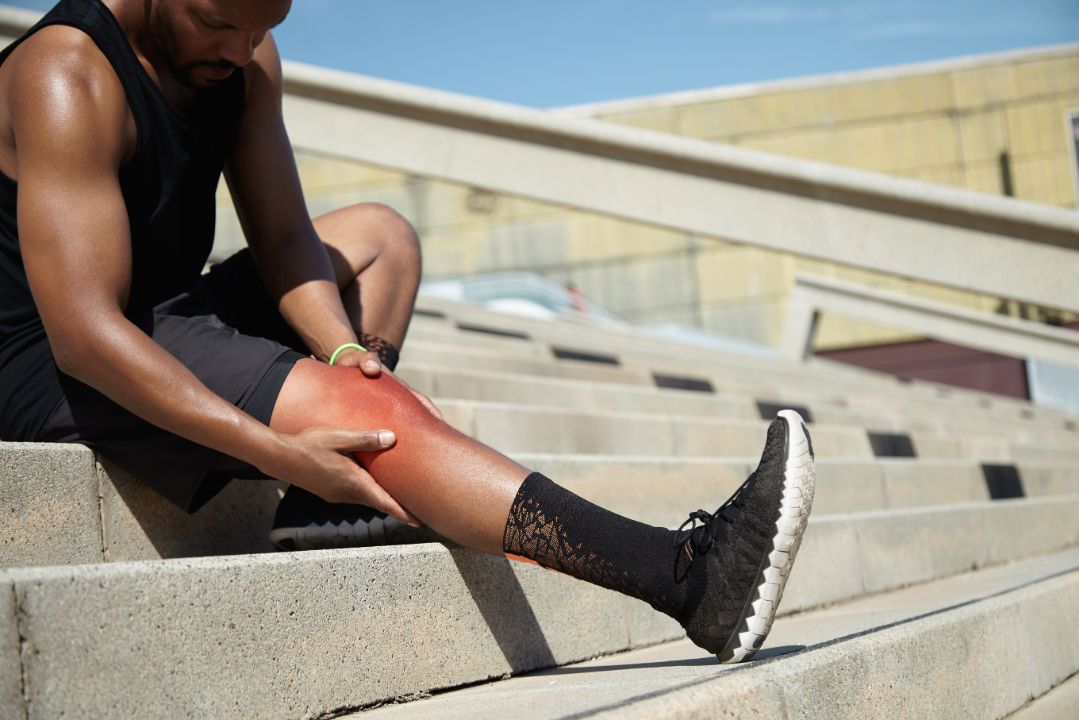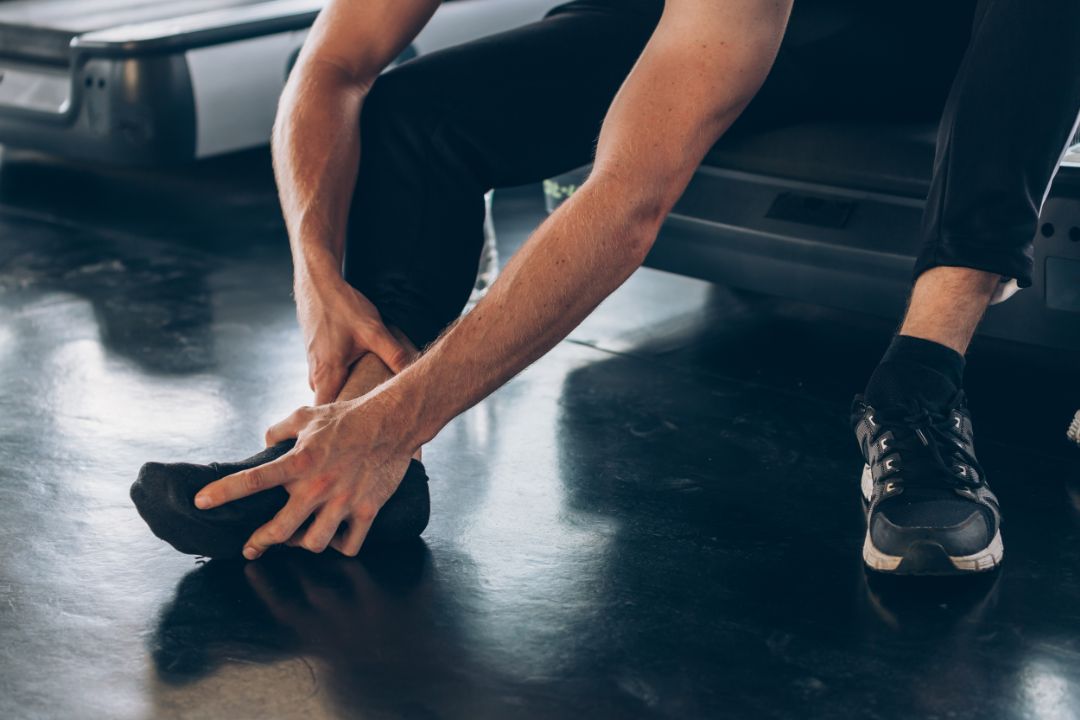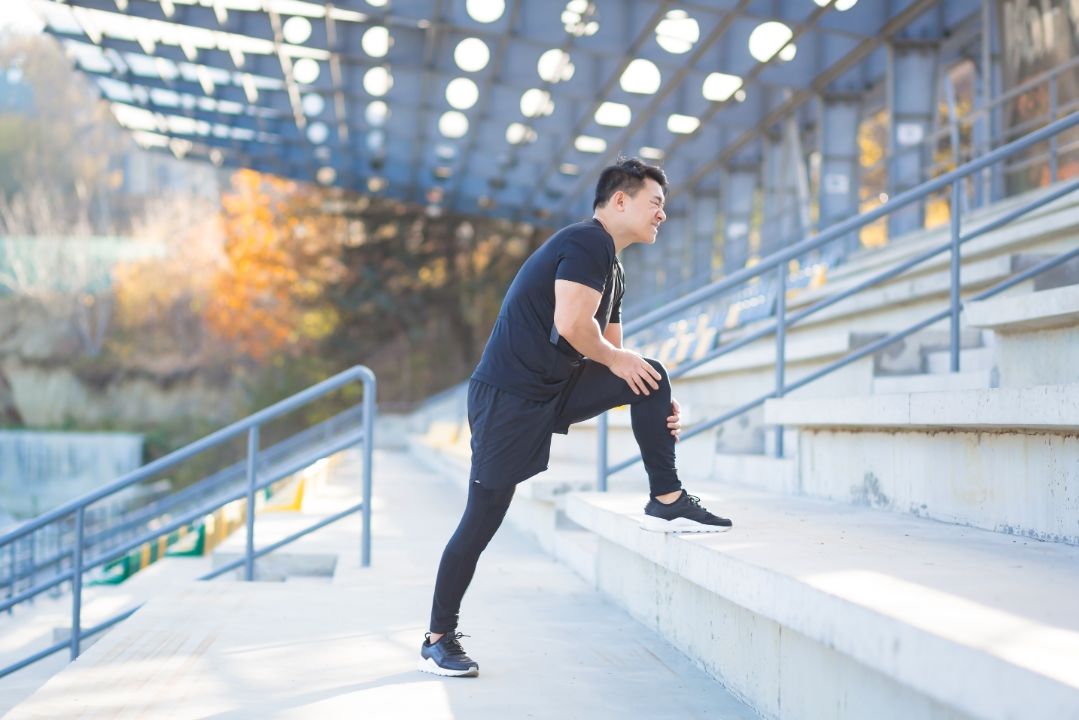When it comes to injuries, a ligament tear is one of the most common. Whether you’re an athlete or simply engaging in everyday activities, a torn ligament can occur suddenly and cause significant pain and discomfort. Understanding the causes, symptoms, and available treatments for a ligament tear is essential for effective management and recovery.
A ligament tear, or sprain or strain, occurs when a ligament is stretched beyond its limit or torn. Ligaments are fibrous tissues that connect bones to one another and stabilise joints.
A ligament injury can cause pain, swelling, and a limited range of motion in the affected area.

Photo Credit: wayhomestudioo, Envato
There are different levels of severity for ligament tears, which can range from a minor sprain to a complete rupture. The type and severity of the tear will determine the appropriate treatment and recovery plan.
A ligament tear can occur due to various causes,
Understanding the cause of a ligament tear can help individuals take appropriate measures to prevent it in the future. Additionally, seeking medical attention promptly can aid in managing a ligament tear and prevent further complications.
The symptoms of a ligament tear vary depending on the severity of the injury and the specific ligament affected.
If you experience any of these symptoms, seeking medical attention as soon as possible is important. Delaying treatment can lead to further damage and complications.
If you experience symptoms of a ligament tear, it is important to seek medical attention promptly. A healthcare professional can determine the extent of the injury and develop an appropriate treatment plan.
During a physical examination, the healthcare professional will assess the affected area, looking for signs of swelling, instability, and limited range of motion. They may also conduct specific tests to determine the severity of the tear, such as the Lachman test for an ACL tear.
Imaging tests, such as X-rays, ultrasounds, and MRIs, can provide a more detailed look at the affected area. They can help identify the specific ligament affected, the extent of the tear, and any associated damage to surrounding tissues.
Sometimes, healthcare professionals may use specialised exams to diagnose a torn ligament. For example, an arthrogram involves injecting dye into the joint and taking X-rays to highlight any tears in the ligament.

Photo Credit: twinsterphoto, Envato
Treatment for a ligament tear will depend on the severity of the injury. In some cases, non-surgical options may be effective, while surgery may be necessary in others.
Non-surgical treatments for a ligament tear include:
If non-surgical treatments are ineffective, surgery may be required to repair the ligament. Surgical options for torn ligament include:
It is important to consult with a healthcare professional to determine the most appropriate treatment plan for a ligament tear. Most people with a ligament injury can recover fully and return to their normal activities with proper treatment and care.

Photo Credit: voronaman111, Envato
Recovering from a ligament tear can be a long and challenging process, but with the right approach, you can regain strength and mobility in the affected area. Here are some key steps to keep in mind during the recovery and rehabilitation process:
Immediately after the injury, it is crucial to rest the affected area and protect it from further damage. This may mean using crutches, a brace, or a splint to immobilise the area and limit movement. Avoid activities that cause pain or discomfort, and give yourself time to heal.
As the injury heals, you can gradually return to light activity. This may include gentle stretching exercises or low-impact activities like walking or swimming. Be sure to listen to your body and avoid pushing yourself too hard too soon. Consult with your healthcare provider or physical therapist to determine when you can progress to more strenuous activities.
Physical therapy is an important part of the recovery process, as it can help you regain strength, flexibility, and stability in the affected area. Your physical therapist will develop a personalised treatment plan based on your specific needs and goals. This may include exercises to improve range of motion, strength training, balance exercises, and more.
Once you’ve recovered from a torn ligament, it’s important to take steps to prevent future injuries. This can include warming up properly before physical activity, using supportive devices like braces or tape, and incorporating exercises that promote strength and stability in the affected area into your routine. It’s also important to listen to your body and avoid overexerting yourself.
By following these steps and working closely with your healthcare provider and physical therapist, you can increase your chances of a successful recovery and reduce your risk of future injuries.
In conclusion, a ligament tear can be a painful and debilitating injury that requires prompt medical attention. By understanding the causes and symptoms of a ligament tear, individuals can seek appropriate treatment to aid in their recovery. It is important to note that prevention measures such as proper warm-up, conditioning, and avoiding risky movements or activities can greatly reduce the risk of future ligament injury

Photo Credit: romanchoknadii, Envato
Suppose you suspect that you may have suffered a torn ligament. In that case, it is essential to consult with a healthcare professional who can provide a proper diagnosis and guide you through the recovery process. This may include rest, physical therapy, and in more severe cases, surgical intervention.
Recovery from a ligament injury can be lengthy, but following a recommended rehabilitation plan can lead to successful long-term healing and a return to normal activity. Remember to take it slow, listen to your body, and consult with your healthcare team if you experience any setbacks or complications.
A ligament tear refers to an injury in which one or more ligaments, which are tough bands of tissue that connect bones to each other, become damaged or torn. When a ligament tear occurs, it can affect the stability and function of the joint.
Various factors, including sports injuries, accidents, and overuse can cause ligament tears. Activities or movements that put excessive stress on the ligaments can lead to tears.
Common symptoms of ligament tears include pain, swelling, joint instability, and limited range of motion. If you experience these symptoms after an injury, seeking medical attention for proper diagnosis and treatment is important.
Ligament tears are typically diagnosed through physical examinations, imaging tests, and specialised exams. Healthcare professionals assess the severity of the tear and identify the specific ligament affected to determine the appropriate treatment plan.
Treatment options for ligament tears may include non-surgical approaches such as rest, ice, compression, and elevation (RICE), physical therapy, and supportive devices like braces. Surgical interventions like ligament reconstruction or repair may sometimes be necessary.
Recovery and rehabilitation following a ligament tear involve rest, gradual return to activity, and physical therapy to rebuild strength and stability in the affected area. Following a comprehensive rehabilitation program is important to maximise healing and minimise the risk of future tears.
To manage ligament tears effectively, seeking medical attention for proper diagnosis and treatment is crucial. Additionally, preventative measures such as adequate warm-up, proper equipment, and proper form during physical activities can help reduce the risk of future ligament tears.